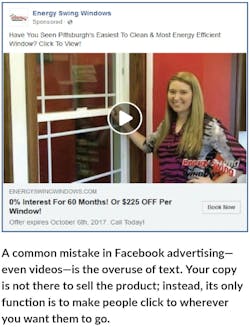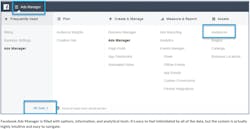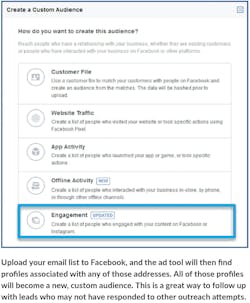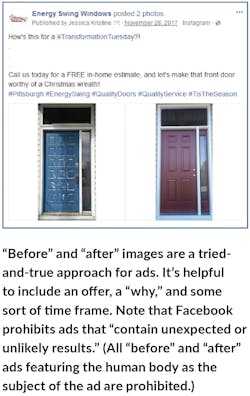Facebook Is Great for home improvement companies
Advertising on this social media giant is about a lot more than boosting posts on your business page. For one, you can target a highly specific audience for each ad, and then compare how the ad performs with one group as opposed to another. You can change your ads daily, based on Facebook analytics that show who’s clicking and visiting your page. It’s also affordable: you can invest $500 or $1,000 in a month and see what happens. That’s much less than the $15 to $20 per click we would spend on a Google Pay Per Click campaign for certain key words in our market. Pay Per Click directs searchers to your website (or a landing page there), but the same is true of Facebook ads.
The traffic we get from Facebook isn’t always people who want to buy now, but the audience is mostly homeowners who are interested enough to be looking. By directing a steady stream of messages their way, we remain top of mind when they decide to act.
Advertising on Facebook is quick and easy, but it takes time to learn the more effective strategies. Here are five tips to help your ads perform better.1. Aggressively Add To Your List
Facebook lets you create custom audiences based on interest and demographics, then run an ad specifically to that group.
This is why it’s important to constantly add to your list of followers. We push out a considerable number of direct mail pieces, and I imported our mailing list, along with all of our clients’ email addresses, into our database. We continually add to this list by inviting people to Like our page, and by including a link to the sign-up page on our website. We also add names to our list using contests and giveaways. For instance, we have a quarterly promotion where we give away $5,000 worth of windows. We have a contest called “Door of the Month Club,” in which we invite people to send us pictures of their favorite door we installed. We post the pictures and let Facebook viewers vote on the one they like best. Anyone who Likes, posts, or shares in response is added to our custom audience list.
2. Create Ads for A Highly Targeted, Custom Audience
Direct your ads to those most likely to become customers. You probably know who they are—homeowners, age3. Newsfeeds Are Crowded. Design Ads For Maximum Effect
Short videos (less than 60 seconds) are good, but my favorite are still images.Remember, they’re scrolling quickly down through their feed. What will stop them? An over-the-top fancy door with custom colored glass could do it. Before and after—new door/old door—works as well. If they engage with the visuals, they’re more likely to read the copy. I like to include an offer, instructions on how to reach us, and then a “Why?” and “By When?” to create some urgency for buyers. If they’re really interested in that door, they can click the chat function and send a message to our Facebook page. Of course, we respond immediately. By being there consistently, you create a dialogue with future prospects as well as the “buy now” customer.
4. Set A Clear Budget
Once you’ve created the audience and the ads, it’s time to set a budget. You’re not laying out big bucks, so you can afford to get a feel for what works. Say you start at $50, and the ad you run5. Monitor and refine your ads
Facebook is not a “set-it-and-forget-it” kind of tool. Download the Facebook Page app and the Facebook Ads app to see how many users are engaging with your ads. Pay attention to what’s working in terms of time of day and days of the week.
It’s easy to track your statistics in real time and make adjustments. You can even “boost” a popular post on your business page to ensure more people see it. Use Facebook performance metrics to continually refine your target audience as well as tweak your ads by trying new offers, fresh visuals, and different copy.
We’ve seen great success with Facebook. With one giveaway, we spent $549.90 to reach 13,082 people. Out of that number, 615 engaged with our posts (via comments, shares, clicks), and 198 signed up for the giveaway. From there we set 31 appointments, sold 13 jobs, and generated $146,684 in revenue over the course of the past 12 months.
Facebook is unlikely to become your top lead source, and may not even make it into your top five. But it could be in the top 10. For us, it’s an important piece of the marketing puzzle, and we’ve seen a lot of success with the platform.
About the Author

Drew Barto
Drew Barto is director of marketing for Energy Swing Windows, a family-owned company serving the Pittsburgh market. This article is based on a presentation Barto gave at ProRemodeler’s Extreme Lead Gen conference in 2018.







